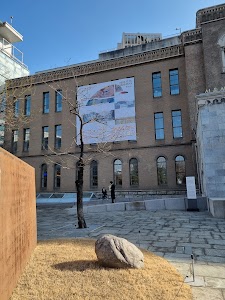The Seoul Museum of Art (SeMA), also known as Seoul Sirip Misulgwan, is an art museum operated by the Seoul City Council in the heart of Seoul, South Korea. Since its establishment in 1988, SeMA has garnered a reputation as one of Korea’s leading art venues, hosting numerous world-renowned exhibitions. Its central location makes it easily accessible to both locals and tourists.
History:
Initially opened in the Gyeonghuigung Palace area with six exhibition rooms and an outdoor sculpture park, the main museum building was relocated in 2002 to a larger space behind Deoksugung Palace. This main branch occupies the former Supreme Court building, a beautifully constructed structure with Renaissance-style architecture dating back to 1928. This iconic facade itself was designated as Cultural Property No. 237 in recognition of its historical and architectural significance.
SeMA has expanded to include several annexes throughout Seoul, including:
- SeMA Gyeonghuigung: Located on the historic site of Gyeonghuigung Palace.
- Nam Seoul Annex Building (SeMA Nam-Seoul): Housed in the former Belgian Embassy.
- SeMA Buk-Seoul: Situated in the Nowon District.
- Naji Art Studio: Providing workshops and support for emerging Korean artists.
- Art Archives of Seoul Museum of Art (SeMA AA): Korea’s first public art archive museum, dedicated to preserving art records and artworks.
- SeMA Nanji Residency: An artist residency program.
- SeMA Storage.
- SeMA Bunker.
- SeMA Nam June Paik Memorial House.
- Seo-Seoul Museum of Art ( 예정 ): A planned museum specializing in new media and integrated art.
Key Features:
Diverse Exhibitions: SeMA showcases a wide range of modern and contemporary art, both Korean and international, with a dynamic program of exhibitions.
Architectural Significance: The main building’s blend of historical Renaissance facade and modern interior design is noteworthy.
Accessibility: Located in central Seoul and easily reachable by public transportation (City Hall Station, Subway Lines 1 & 2).
Public Engagement: SeMA offers various public programs, including low-cost art classes, docent tours in English and Korean, and public lectures.
Collection: The museum’s collection includes over 4,500 artifacts, with a significant portion focusing on contemporary Korean art from the 1990s and 2000s.
The Seoul Museum of Art aims to be a “beautiful art museum, a good art museum, and a smart art museum,” connecting the cultural city of Seoul with the world and establishing itself as a leading public art institution.
